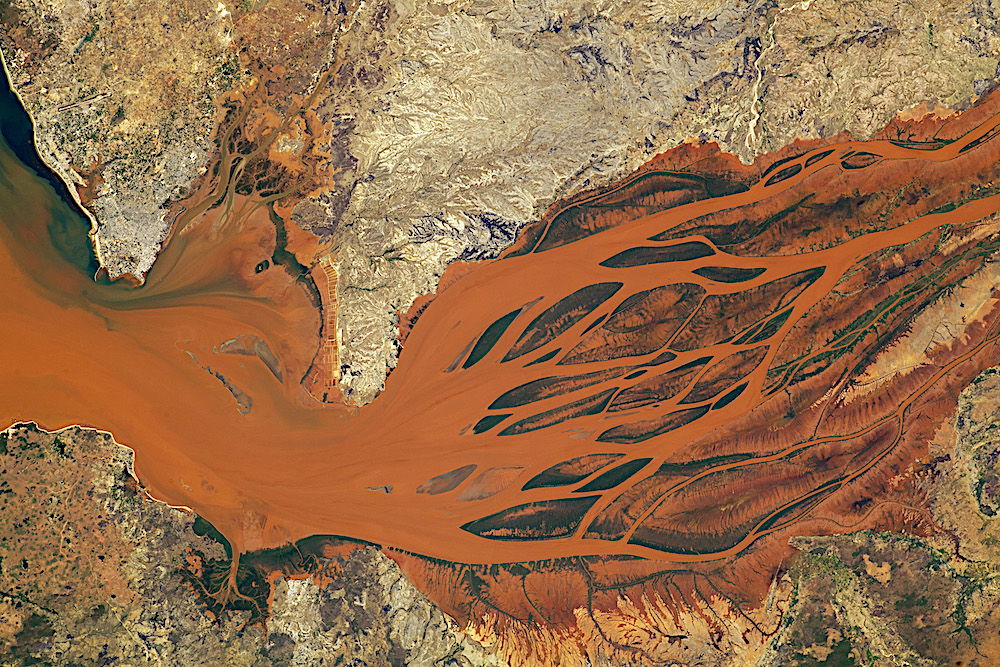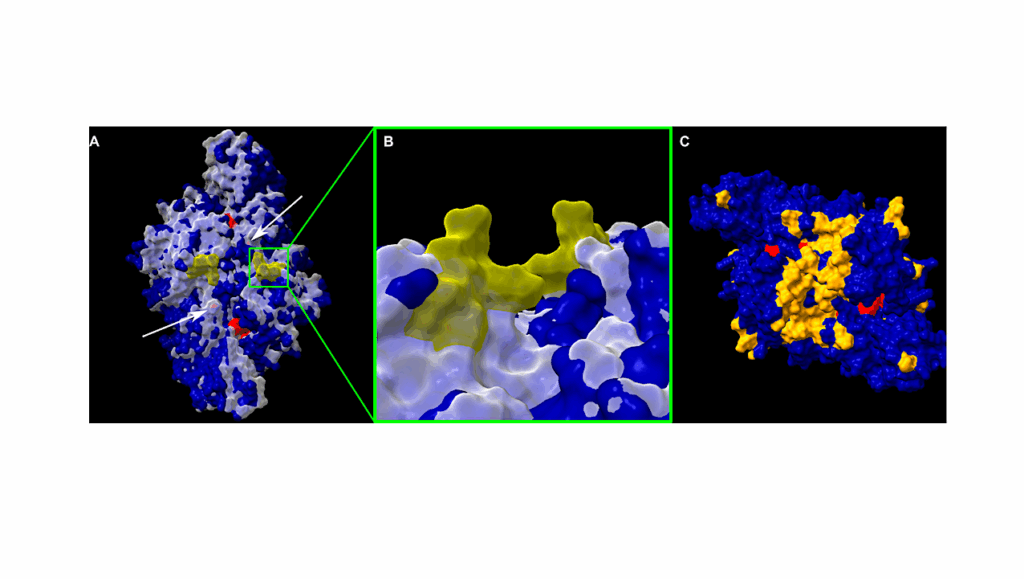Orbital Recon: Seeking Life Signs From Orbit

Editor’s note: We observe new worlds from afar first with telescopes, then spacecraft flybys, then robotic orbital missions, followed perhaps by human missions. How we eventually study the surface of anew world will be based on space-based observations, As we send landers and rovers we will gather ground truth that allows us to calibrate what we see form space with what is actually present ont he surface. Since Earth is also a planet – and we have easy access to space and the entire surface – it makes ssense to use Earth as a an analog for how we’d study new worlds – especially to search for biosignatures – indicators of life. Large surface features cause by life forms such as the ones in this posting lend themsleves to orbital imaging and analysis.
Some of Earth’s water bodies can assume a blood-like appearance due to the presence of red-pigmented algae, bacteria, and sediments. Astronauts aboard the International Space Station often capture photographs of this “bloody” phenomenon.
This image (top), taken over the high desert plateau of the Bolivian Andes, displays the Laguna Colorada, or Red Lagoon. The photograph showcases the rusty hues associated with hypersaline environments, where algae and other microorganisms color the shallow waters. A combination of light intensity, salt content, pH levels, and temperature influence the growth of red algae. Similar occurrences are observed worldwide, from the Great Salt Lake in the United States to Lake Aralsor in Kazakhstan.

Astronaut photograph ISS070-E-959 was acquired on September 30, 2023, with a Nikon D5 digital camera using a focal length of 400 millimeters. — NASA
The second image, also taken by an astronaut on the space station, shows the reddish-brown waters of the Betsiboka River Delta in Madagascar. In this case, the color is caused by the transport of iron-rich sediment. The sediment can clog waterways in the delta’s estuarine environment, but it can also form new islands that become colonized by mangroves. Many other water bodies, such as the reservoir fed by the Jacui River in southern Brazil, are colored by reddish sediment.
Despite their rusty color, these arteries of water are important for biodiversity. Algae and other microorganisms serve as a vital food source for vulnerable bird species, such as the Andean flamingo in the Laguna Colorada. Within the Betisboka River Delta, the estuary provides food, such as seagrasses, to the endangered green turtle and vulnerable dugong, or sea cow.
The images are provided by the ISS Crew Earth Observations Facility and the Earth Science and Remote Sensing Unit, Johnson Space Center. The images were taken by a member of the Expedition 69 crew and the Expedition 70 crew, respectively. The images have been cropped and enhanced to improve contrast, and lens artifacts have been removed. The International Space Station Program supports the laboratory as part of the ISS National Lab to help astronauts take pictures of Earth that will be of the greatest value to scientists and the public, and to make those images freely available on the Internet. Additional images taken by astronauts and cosmonauts can be viewed at the NASA/JSC Gateway to Astronaut Photography of Earth. Caption by Sara Schmidt, GeoControl Systems, JETS Contract at NASA-JSC.
Astrobiology,








